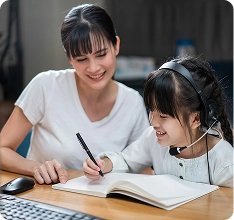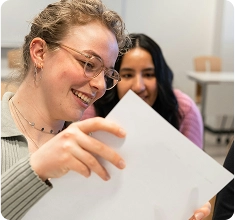Learning how you learn is one of the most essential skills that a student can master. The issue with that is all students simply don’t learn the same way. So, when we talk about the 5 most effective learning strategies, they may not all work for a particular student, but at least one of these methods, and probably more, will be able to help a struggling student achieve better results.

Active Listening
For people who learn best through hearing someone else say something aloud, active listening is a great learning strategy. In active listening, a person repeats back to a teacher in his own words what something means. This activity of replying after each new point makes listening into an active, rather than a passive, behavior. The student is less apt to let his mind wander while the teacher is talking when he is expected to respond back to it. This strategy is very effective in one-to-one learning situations with tutors and study groups.
Note Taking
Taking notes is a time tested learning strategy and everyone seems to have their own unique way to get it done. The best method for taking notes, though, was developed at Cornell University and is thus named. The Cornell method asks the note taker to draw a line across the note taking paper about ¼ of the way from the bottom and another line down the left hand side of the paper about 2 inches in. Notes are taken in the main section of the page during the class period as usual. On the left hand side, questions that are mentioned during class can be jotted down as well as any other cues that can be used to help remember the notes on the page. In the area at the bottom of the page, below the line, write a 2-3 line summary of what was discussed during class. This allows you to immediately process the information and record it in yet another way and it makes the pages easier to index for later study.
SQ3R method
When a student has a problem with reading comprehension, the SQ3R (survey, question, read, recite, review) method can help break the process into easily digestible chunks. Students first take a quick glance over the entire selection to be read. This allows them to see what is coming and allows them to start to formulate ideas about how things will proceed. During the survey, questions can be asked about why the teacher assigned the reading and what you should be getting out of it.
The read, recite and review sections are all geared toward interacting with the text itself. Reading is an active process where a student looks for the answers he asked in the questioning stage. Reciting involves going back through the section you just read and highlighting areas of importance. Reviewing is the continual process of incorporating everything you already know about the reading with the new information that is being presented. The key to SQ3R is that is makes the reader take an active part in learning by interacting on several different levels with the text.
Poyla’s 4 Step Process
Mathematician George Poyla was always trying to get people to understand that every problem can be solved with a heuristic approach. He distilled it down to a simple 4-step process that is still the preferred method in several disciplines today. His four steps seem simple on the surface, but are the underlying lynchpins of all problem solving. Step one is understanding the problem or knowing what you know and what you don’t know. Step two is devising a plan to test for your assumptions based on your understanding. Step three is carrying out the plan, basically doing the work that you determined you would do in step two. And step four is looking back at the results of your plan and making observations. This is a close cousin of the scientific method and is useful for everything from determining the orbits of asteroids to determining the best way to tie a shoe.
Kinesthetic Learning
Kinesthetic learning is often referred to as learning by doing. A small portion of the population, about 5 percent, learn much more effectively by doing an action than by reading about it or listening to a lecture. While this isn’t a large portion of the at-large population, there are a disproportionate amount of these kids falling behind in traditional classrooms. Specialized tutors are often the best choice for this type of student as they have more time to focus on action-based teaching than a traditional teacher does.
By trying each of these methods, a struggling student is often able to pull his grades up and excel academically.



